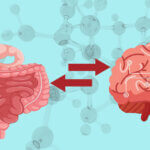Overview of OCD Thoughts
The mental health illness known as obsessive-compulsive disorder (OCD) is typified by recurring, unwanted thoughts (called obsessions) and repetitive actions or thoughts (called compulsions). These thoughts are characterized by their intrusive nature, intensity, and persistence.
These thoughts can be about germs, excessive checking, needing things in order, or intrusive harmful thoughts. Recognizing these patterns helps tailor strategies. People with OCD may experience these thoughts relentlessly, leading to heightened anxiety and distress. Unlike fleeting thoughts that most individuals experience, OCD thoughts can trigger compulsive behaviors or rituals as a way to alleviate the anxiety caused by these intrusive thoughts.
Understanding OCD thoughts is crucial for effectively controlling OCD thoughts. Whether challenging irrational thoughts, gradually facing fears in exposure therapy or practicing mindfulness, awareness enables targeted interventions. Seeking professional help individuals know how to manage ocd thoughts and strive for a more balanced mental state.
Understanding OCD Thoughts
Understanding OCD thoughts is crucial for effectively controlling OCD thoughts. These thoughts can be about germs, excessive checking, needing things in order, or intrusive harmful thoughts. Recognizing these patterns helps tailor strategies. Whether challenging irrational thoughts, gradually facing fears in exposure therapy or practicing mindfulness, awareness enables targeted interventions. Seeking professional help empowers individuals to manage OCD thoughts and strive for a more balanced mental state.
Types of OCD Thoughts
OCD thoughts vary: Contamination fears trigger excessive handwashing, checking obsessions lead to repeated actions, symmetry obsessions demand perfect order, and intrusive thoughts are upsetting mental images. Recognizing these types is vital for tailored strategies, like cognitive restructuring and mindfulness, helping individuals controlling OCD thoughts and actions.
Contamination Obsessions
Contamination obsessions in OCD mean being super scared of germs or dirt. People with this type of OCD may engage in behaviours such as excessive handwashing to the point of causing skin damage, overuse of cleaning products, and avoidance of touching common objects to prevent contamination.
In addition to fears of dirt and germs, individuals with contamination OCD may also develop anxieties related to blood, spoiled food, bodily fluids, or broken glass. The compulsions associated with this OCD type go beyond typical hygiene practices and can severely impact daily life. To feel better, they might do things over and over. Getting help from pros and learning new ways to think can help break this cycle of fear and habits.
Checking Obsessions
Checking obsessions in managing obsessive-compulsive disorder thoughts makes people super anxious about making mistakes or forgetting important things. They often struggle with questioning their own memory, judgment, and reality perception. They frequently second-guess simple tasks, like locking a door or turning off a stove, leading to a cycle of checking and rechecking.
The hallmark of doubt and double-checking OCD is the inability to trust that a task is completed correctly, even when evidence suggests otherwise. This often stems from underlying anxiety and a need for certainty. People affected by this subtype may spend excessive amounts of time and energy verifying their actions, which can significantly disrupt their daily routines and quality of life.
Ordering and Arranging
Ordering and arranging is characterized by an overwhelming fixation on order and symmetry in one’s environment, leading to repetitive behaviors aimed at achieving a specific arrangement deemed satisfactory by the individual. Unlike ordinary preferences for organization, individuals with this subtype may become consumed by their need for precision, spending excessive amounts of time and effort arranging and rearranging items to meet their exacting standards.
Common behaviors associated with ordering and arranging OCD include:
- Repetitive rearranging of items until they feel “correct” or meet a certain standard.
- Engaging in specific counting rituals, such as counting items repeatedly or arranging them in specific numerical orders.
- Performing certain actions a set number of times due to an assigned significance to that particular number.
- Developing routines that center around maintaining order and symmetry, often at the expense of other important activities.
Intrusive Thoughts
In OCD, intrusive thoughts are like unwelcome and upsetting ideas that pop into your head, making you anxious. Some may involve causing harm to oneself or others. To feel better, people might do the same things over and over in their minds. It’s tough because these thoughts don’t match what they really want. Managing them means learning to let the thoughts be without doing those repetitive things and getting help from pros. It’s about taking charge and not letting these thoughts control you.
How to Control OCD Thoughts
To control OCD thoughts, try strategies like challenging irrational thoughts, facing fears gradually with exposure therapy, and practicing mindfulness. Relaxation techniques, such as deep breathing and muscle relaxation, help ease anxiety. Seeking support from an OCD specialist for therapies like TMS or ERP, and considering medication, can provide additional help. Combining these approaches empowers individuals to manage OCD thoughts and strive for a more balanced mental state.
Cognitive Behavioral Techniques
Cognitive Behavioral Techniques (CBT) are vital for handling OCD with the help of our OCD specialists in Mumbai. Cognitive restructuring shifts irrational thoughts, promoting balance. Exposure and Response Prevention (ERP) faces fears gradually, reducing anxiety and breaking obsession cycles. These methods empower individuals for a more fulfilling life. Seeking professional guidance enhances the effectiveness of CBT in managing OCD.
Cognitive Restructuring
Cognitive restructuring for OCD involves identifying and challenging irrational thoughts. Replace negative thought patterns with more realistic and positive ones. For instance, if you fear contamination, challenge the belief that every surface is a threat and replace it with a more balanced perspective. These ocd calming techniques aim to address core beliefs that contribute to anxiety and distress. By questioning the validity and accuracy of these beliefs, individuals can reframe their perspectives, leading to a reduction in anxiety and improvement in overall well-being.
Exposure and Response Prevention (ERP)
Exposure and Response Prevention techniques for OCD is a behavioral therapy that involves gradually exposing yourself to feared thoughts or situations while refraining from compulsive behaviors. Over time, this helps reduce anxiety and break the cycle of obsessions and compulsions.
Mindfulness and Meditation
Mindfulness and Meditation are important for handling OCD. Grounding techniques, like focusing on the senses, help shift attention during overwhelming thoughts. Mindfulness practices, such as mindful breathing, allow observing thoughts without getting too caught up. These methods promote calmness, reducing anxiety. Using mindfulness in daily life empowers individuals to better manage OCD thoughts, working toward a more balanced mental state.
Techniques for Grounding and Centering
- Focus on your breath, inhaling and exhaling slowly and deeply.
- Bring attention to different parts of your body, noticing sensations without judgment.
- Cultivate feelings of kindness and compassion towards yourself and others.
- Pay attention to your senses as you walk, focusing on the present moment.
Mindfulness Practices for Managing OCD Thoughts
Our OCD specialist in Mumbai suggests that mindfulness practices are strong tools for dealing with OCD thoughts. Methods like mindful breathing and body scans help you be aware without getting too caught up in distressing thoughts. You take charge of your mind when you learn to observe ideas objectively. Using mindfulness in daily life calms anxiety linked to OCD. These practices empower you to manage thoughts effectively, leading to a more balanced and mindful approach to life.
Additional Tips
- Start small: Begin with short meditation sessions and gradually increase the duration.
- Be patient: Mindfulness and meditation are skills that take time to develop.
- Find a quiet space: Create a calm environment for your practice.
- Use guided meditations: There are many guided meditation apps and resources available.
Relaxation and Stress-Reduction Techniques
Relaxation and stress-reduction techniques are important for handling OCD. Deep breathing, inhaling slowly and exhaling, instantly calms anxiety. Progressive Muscle Relaxation (PMR), involving tensing and relaxing muscles, reduces overall tension. These methods provide immediate relief, calming the nervous system. Using them in daily life helps manage stress, promoting a more relaxed and balanced mental state when dealing with OCD challenges.
Deep Breathing Exercises
Deep breathing is a simple yet powerful ocd calming technique to manage anxiety and stress. Exercises involve:
- Sit or lie down in a comfortable position.
- Close your eyes and gently bring your attention to your breath.
- Breathe in slowly through your nose, counting to four as you inhale.
- Hold your breath for a count of four.
- Breathe out slowly through your mouth, counting to six as you exhale.
- Continue this cycle for several minutes.
Progressive Muscle Relaxation (PMR)
Progressive Muscle Relaxation (PMR) is a technique where you tense and then relax different muscle groups. By doing this, you reduce overall tension and promote relaxation. It’s a simple yet effective method to calm the body and mind. Practicing PMR regularly can help manage stress and contribute to a more balanced mental state.
Seeking an OCD Specialist
Getting help from the top psychiatrist in India at Jaslok Hospital is important in OCD treatment. They have treatments like TMS and ERP, which are tailored to your needs. TMS uses magnets, and ERP helps with anxiety triggers. With the specialist’s guidance, you can explore therapy options, including medication. Their support empowers you to manage OCD effectively for a more balanced and fulfilling life.
Therapy Options: TMS, ERP, and More
Consulting with an OCD specialist is crucial for tailored treatment with non-invasive therapies for OCD in Mumbai. Transcranial Magnetic Stimulation (TMS) and ERP are advanced therapeutic options that have shown promise in alleviating OCD symptoms. TMS uses magnetic fields to stimulate nerve cells, while ERP helps desensitize individuals to anxiety triggers.
Medication for OCD Treatment
Medication for OCD may be prescribed to manage OCD symptoms. Selective Serotonin Reuptake Inhibitors (SSRIs) are commonly used antidepressants that can be effective in reducing obsessions and compulsions. However, medication should be discussed thoroughly with a healthcare professional.
Discover the neuro-protective properties of Amla or Indian Gooseberry in our blog post: What Are the Neuro-Protective Properties of Amla or Indian Gooseberry?
Controlling OCD thoughts is a multifaceted process that involves understanding the nature of obsessions, adopting cognitive and behavioral strategies, and seeking professional help when needed. By integrating techniques like cognitive restructuring, exposure and response prevention, mindfulness, and relaxation exercises, individuals can regain control over their lives. Remember, seeking support from an OCD specialist from our obsessive-compulsive disorder hospital in India opens the door to personalized treatment options, including therapy and medication. Managing OCD is a journey, but with the right tools and support, it is a journey toward a more fulfilling and balanced life.






